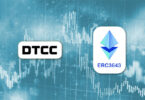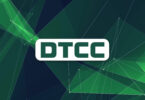Today the big U.S. clearinghouse DTCC issued a whitepaper outlining the principles for tokenized securities and managing the post-trade processing. In 2017 the DTCC processed $1.6 quadrillion in securities transactions. Although most of the paper explores the challenges of permissionless blockchains, part of it focused on issues with instant settlement, a feature most relevant to permissioned blockchains.
The DTCC has experience because it has a blockchain replacement in the works for its post-trade derivatives platform, the Trade Information Warehouse which is expected to launch in Q2.
Pros and Cons of immediate settlement, delivery versus payment
One of the most significant benefits of distributed ledger technology (DLT) is if stock and cash are tokenized then settlement is immediate: delivery versus payment (DvP). This removes the counterparty risk of the payment failing after the transfer of the stocks. But the DTCC warns that there’s a downside because it can mean that traders need more cash at specific times during the day.
Typically market participants both buy and sell a variety of stocks. If, as now, there’s a centralized clearing system then transactions are batched. Simplistically, if a trader buys a $1 million and sells $500,000 they’d only have to fund the net $500,000 in the current system. But with instant settlement, at the point in time when that buy transaction is settled, they would need to have $1 million on hand rather than $500,000.
In turn, that means more liquid funds need to be kept on hand which carries an opportunity cost. One solution is to enable real-time access to credit providers. But this re-introduces credit risk, just in a different place.
A few months ago Canada’s Project Jasper raised similar concerns.
The DTCC principles
Turning to the bulk of the report, the DTCC highlighted that DLT introduces unique issues for regulating post-trade processing. As an example, the paper notes that public permissionless blockchains can have uncertainty over jurisdiction versus permissioned blockchains that usually involve accepting contract terms and hence jurisdiction.
Permissionless blockchains also suffer from a lack of payment certainty or finality. Transactions on such blockchains are generally reversible, particularly within the first six minutes on Ethereum. If payment is rolled back, that’s problematic if title to the security has already been transferred.
Other issues outlined include an identifiable governance structure and risk management processes covering credit, liquidity and operational risks. Plus there need to be rules for token issuance, custody, accounting and recordkeeping practices. And finally, the platform requires resilience.
Mark Wetjen, Chairman of the Board, DTCC Deriv/SERV LLC, the subsidiary implementing the new derivatives platform, commented: “In our view, these issues are fundamental to protecting investors and establishing trust in the safety and soundness of security token platforms.”






